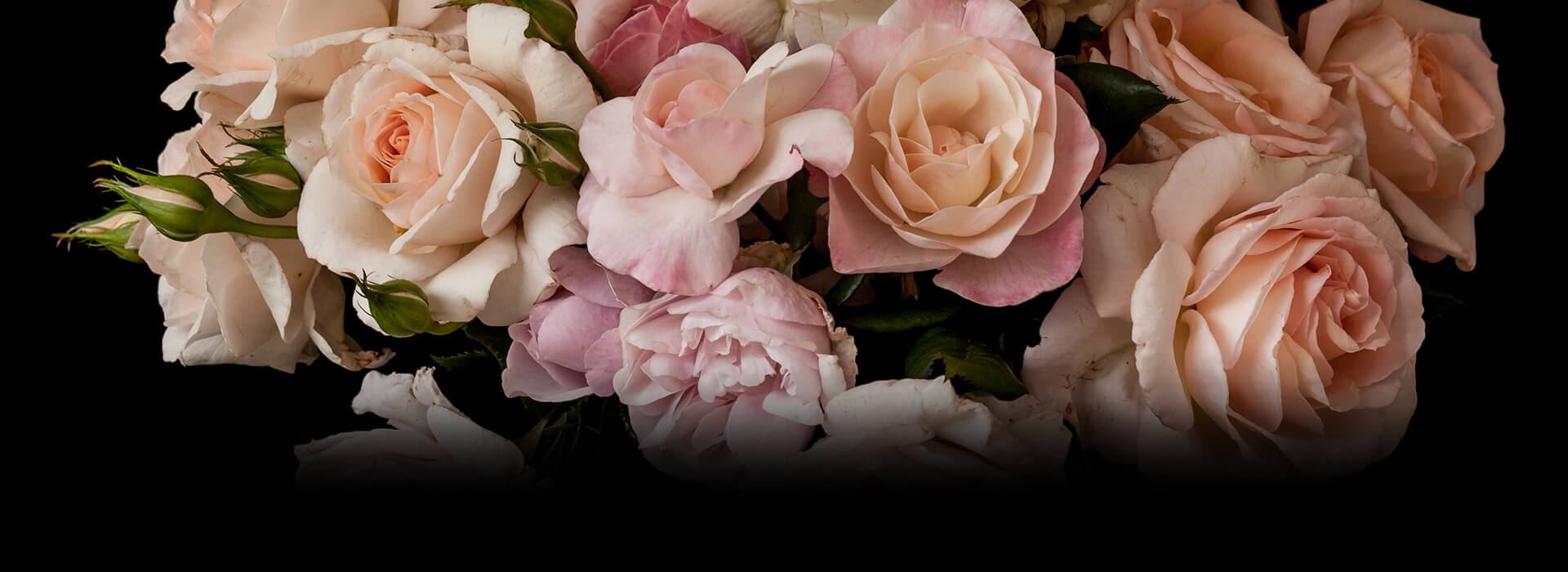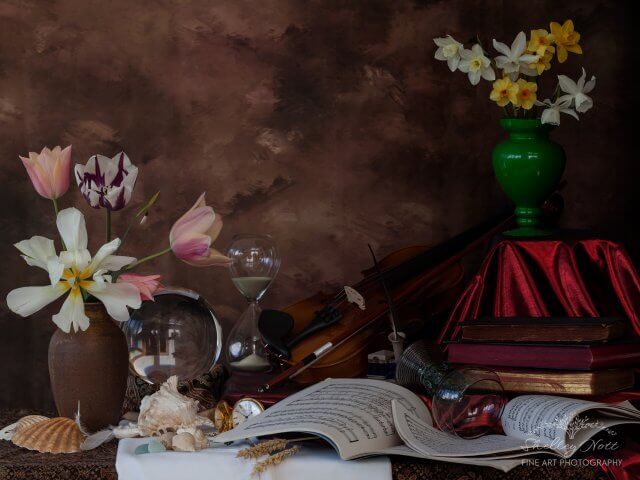All my still life photographs have meanings contained within them which require a great deal of thought and even more time. I endeavour to create lovely looking photographs, but there is inevitably something else there to be discovered. You will look and then look again.
We’ve all seen the Memento Mori still life paintings of the Dutch Golden Age but the themes contained within them can be traced back to Greek and Roman times. They are cautionary tales reminding us that however we live our lives, it is all illusory. Our time here is limited and whatever we do while we are here, such as writing, making music, amassing wealth or living well, will all pass.
This was a popular idea during the sixteenth and seventeenth centuries in the Lowlands when a beautiful painting of sumptuous objects was a striking addition to one’s wall but, for the growing mercantile class, it also served as a reminder that the amassing of money was no way of avoiding the inevitable.
As with all of my photographs, influenced by the Dutch and Flemish Masters, this is an allegory so its true meaning is something beyond what you see at first. There are hidden meanings in every object there and while the 17th century viewer would have recognised them immediately it may be more challenging to the 21st century one.
The Spring narcissi allude to the coming of new life while the tulips are more exotic, harking back to the time of “Tulip Mania” when they were only available to the very rich. Indeed those 17th century paintings of tulips in vases were created because it was cheaper to pay an artist to paint a picture than to buy the flowers themselves!
The violin, books, quill and inkwell, music manuscripts and books speak of those earthly activities which were considered to be purely ephemeral. The spilled Roemer glass was often included as it showed the owner was so wealthy they didn’t bother about a wine glass being knocked over. On the other hand, another interpretation is that it alludes to the transience of life.
It is not all doom and gloom, however. There are symbols of hope, resurrection and an afterlife. The traditional memento mori paintings had invitations to invest in what lasts beyond death, namely the soul. This type of work is saying that no matter how transient life is, there is always something higher to which one can aspire.
Wheat ears often appear in depictions of the Adoration of Christ in the manger. Grain was then considered a symbol of the Resurrection and so of the redemption of the soul. Here they give hope of an afterlife.
The passage of time is represented by the hourglass and pocket watch, showing the inevitability of time running out which we can do nothing about. Shells have always been symbolic of transition, having been containers of living creatures. The scallop shells in particular represent the journey, both physical and spiritual, of the pilgrim. Sea glass tumbles in the North Sea for an unknown amount of time before it is washed up on the beach and so I feel it speaks of journeys of an indeterminate length. Feathers always symbolise transition too, creatures moving on and also representing the Holy Ghost.
Bubbles were often shown in the paintings of the Dutch and Flemish Masters either as physical bubbles or glass spheres and were known as homa bulla the metaphor “man is a bubble”. Although a person may look strong and substantial, life itself is as fleeting as a bubble.
This photograph is the latest of my still lifes and as usual is created using window light only. It took a long time in designing the overall idea, many hours of construction and bucket loads of patience to get the light just right.
Memento Mori may mean “remember you will die” but it is also a concept that can result in luscious, interesting and even mesmerising images, offering hope. I do hope you agree.


